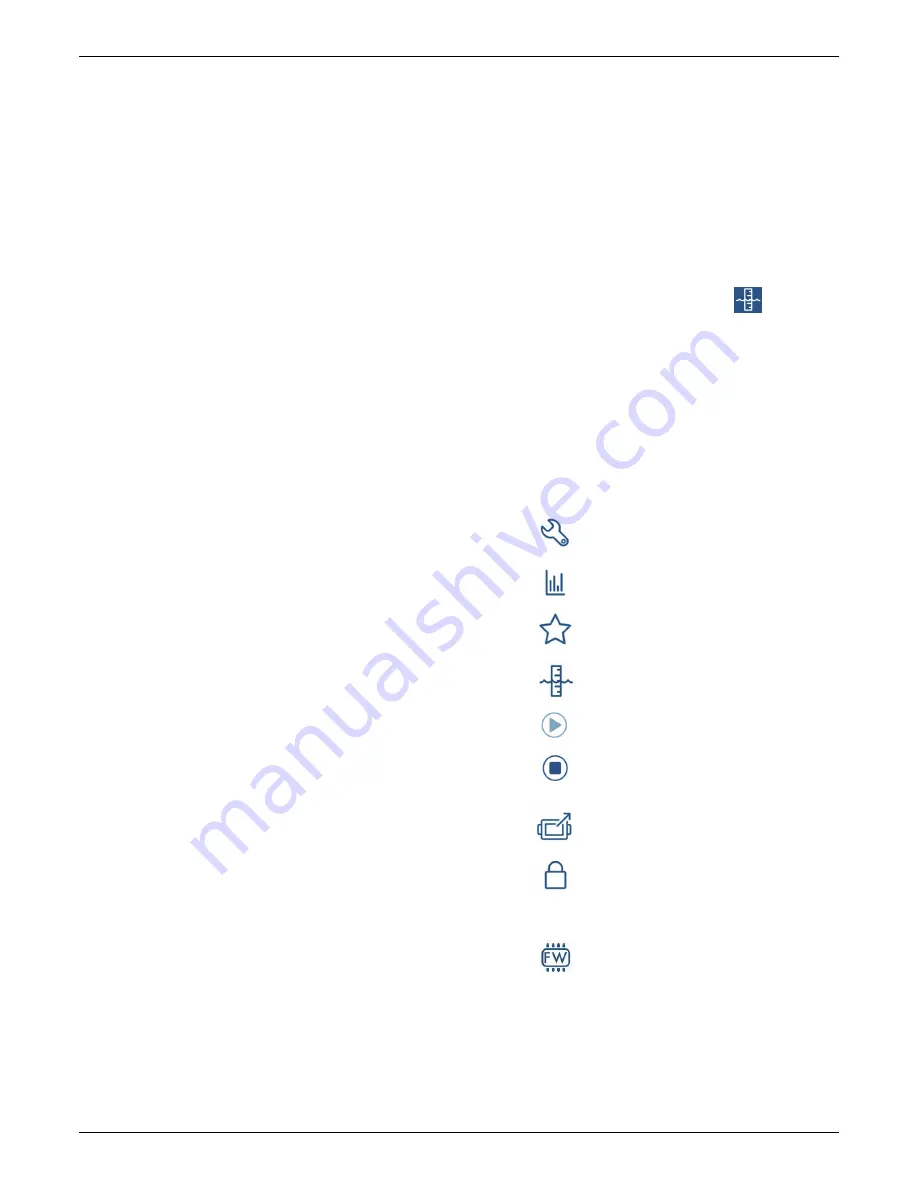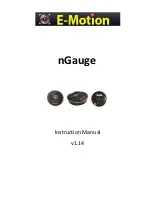
HOBO MX Water Level Logger (MX2001-0x) Manual
U.S. and International Sales: 1-508-759-9500 5
www.onsetcomp.com
•
On Save.
Logging begins immediately after configuration
settings are saved.
•
On Next Interval.
Logging begins at the next even
interval as determined by the selected logging interval
setting.
•
On Date/Time.
Logging begins at a date and time you
specify. Specify the date and time.
Note:
The Reference Water Level you enter is associated
with the first logged data point; make sure the logger is
deployed in location when it starts logging.
7.
Tap Stop Logging and specify when logging ends.
•
Never Stop (Overwrites Old Data).
The logger does not
stop at any predetermined time. The logger continues
recording data indefinitely, with newest data overwriting
the oldest.
•
On Date/Time.
The logger stops logging on a specific
date and time that you specify.
•
After.
Select this if you want to control how long the
logger should continue logging once it starts. Choose the
amount of time you want the logger to log data. For
example, select 30 days if you want the logger to log data
for 30 days after logging begins.
•
Stop When Memory Fills.
The logger continues recording
data until the memory is full.
8.
Tap Logging Mode. Select either Fixed or Burst logging.
Fixed logging records data for all enabled sensors and/or
selected statistics at the logging interval selected (see
Statistics Logging
for details on choosing statistics options).
Burst mode logs at a different interval when a specified
condition is met. See
Burst Logging
for more information.
9.
Upload Data Via. Determines how data is uploaded to
HOBOlink. Choose Gateway or HOBOconnect.
10.
Enable/Disable Sensors. You must enable differential
pressure to calculate water level. Enable temperature to log
absolute pressure. In addition, you must enable
temperature if you select the water density option “Fresh
Water adjusted for Temp” because the temperature values
are used to calculate the water density.
11.
Tap Start to save the settings and start logging.
Logging begins based on the specified settings. Press the start
button if you set it up to start logging with a button push. See
Deploying and Mounting the Logger
for details on mounting
and see
Downloading Data From the Logger
for details on
downloading. You can update the reference water level or
water density during the deployment if necessary (see
Updating the Reference Water Level and Water Density
).
Setting the Reference Water Level and Water Density
The reference water level is the current water level when the
logger starts logging; make sure the sensor is in position when
logging starts. Make this reading as accurate as possible, since
this reading is used to calibrate the water level data, and adjust
it to your reference . See section 5, starting on page 7 for
information on how to measure and enter the reference water
level. The logger must be logging for you to enter the reference
water level and density.
1.
Tap Devices.
2.
Tap the logger tile in the app to connect to the logger.
3.
Tap Calibrate.
4.
Enter the new Reference Water Level corresponding to the
first value logged in the current deployment and select the
Units.
5.
Select the Water Density or enter a specific density in the
Manual Input field.
6.
Select Water Density Units.
7.
Tap Save. Changes take effect immediately. This also
creates Reference Water Level and Water Density events
in the data file.
Notes:
You can also edit the water parameters after you have
downloaded data from the logger by tapping
when
viewing a data file. See Using the Data File Viewer for details.
•
When the logger is stopped, the water level reading shown
while connected to the logger does not reflect any reference
water level and water density values you have entered (it
reverts to a reference water level of zero and a water density
of Fresh Water Adjusted for Temperature). Once logging
begins, the readings shown in the app are based on the
reference water level and water density you entered.
•
When the logger is connected to the app:
Tap this:
To do this:
Specify logger settings and save them to the
logger to start logging. See
Configuring the
Logger
.
Tap to view live data.
Mark the logger as a favorite. You can then filter
the list of devices to show only loggers marked as
favorites.
Calibrate the logger. Allows you to set the
Reference Water Level and Water Density.
Start logging if the logger is configured to start
On Button Push. See
Configuring the Logger
.
Stop logging data (this overrides any Stop
Logging settings described in
Configuring the
Logger
).
Download logger data. See
Downloading Data
From the Logger
.
Set a password for the logger that is required
when another mobile device attempts to connect
to it. To reset a password, press the button on
the logger for 10 seconds or tap Manage
Password and tap Reset.
Update the firmware on the logger. A logger
download is completed automatically at the
beginning of the firmware update process.
Important:
Before updating the firmware on the
logger, check the remaining battery level and
make sure it is no less than 30%. Make sure you
have the time to complete the entire update
process, which requires that the logger remains
connected to the device during the upgrade.






















![Lambrecht power[cube] 30.95800.015000 Manual preview](http://thumbs.mh-extra.com/thumbs/lambrecht/power-cube-30-95800-015000/power-cube-30-95800-015000_manual_3388101-01.webp)








